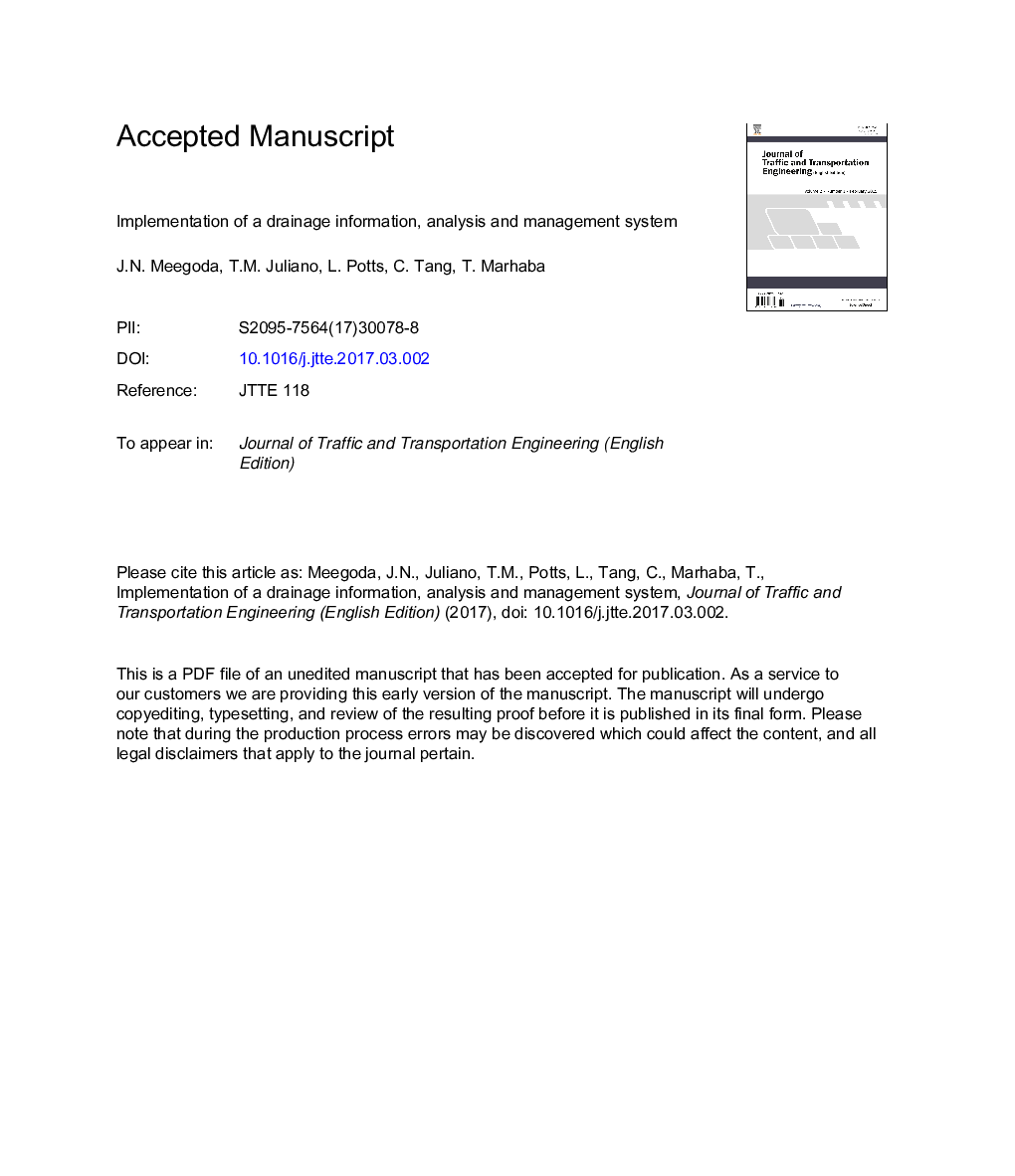| Article ID | Journal | Published Year | Pages | File Type |
|---|---|---|---|---|
| 4924685 | Journal of Traffic and Transportation Engineering (English Edition) | 2017 | 28 Pages |
Abstract
An integrated drainage information, analysis and management system (DIAMS) was developed and implemented for the New Jersey Department of Transportation (NJDOT). The purpose of the DIAMS is to provide a useful tool for managers to evaluate drainage infrastructure, to facilitate the determination of the present costs of preserving those infrastructures, and to make decisions regarding the optimal use of their infrastructure budgets. The impetus for DIAMS is the culvert information management system (CIMS), which is developed to manage the data for culvert pipes. DIAMS maintains and summarizes accumulated inspection data for all types of drainage infrastructure assets, including pipes, inlet/outlet structures, outfalls and manufactured treatment devices. DIAMS capabilities include identifying drainage infrastructure, maintaining inspection history, mapping locations, predicting service life based on the current condition states, and assessing present asset value. It also includes unit cost values of 72 standard items to estimate the current cost for new assets with the ability to adjust for future inflation. In addition, DIAMS contains several different repair, rehabilitation and replacement options to remedy the drainage infrastructure. DIAMS can analyze asset information and determine decisions to inspect, rehabilitate, replace or do nothing at the project and network levels by comparing costs with risks and failures. Costs may be optimized to meet annual maintenance budget allocations by prioritizing drainage infrastructure needing inspection, cleaning and repair. DIAMS functional modules include vendor data uploading, asset identification, system administration and financial analysis. Among the significant performance feature of DIAMS is its proactive nature, which affords decision makers the means of conducting a comprehensive financial analysis to determine the optimal proactive schedule for the proper maintenance actions and to prioritize them accordingly. Benefits of DIAMS include long-term savings that accrue by adopting optimized preventive maintenance strategies and facilitating compliance with Governmental Accounting Standards Board (GASB) and federal storm water regulations.
Related Topics
Physical Sciences and Engineering
Engineering
Aerospace Engineering
Authors
J.N. Meegoda, T.M. Juliano, L. Potts, C. Tang, T. Marhaba,
